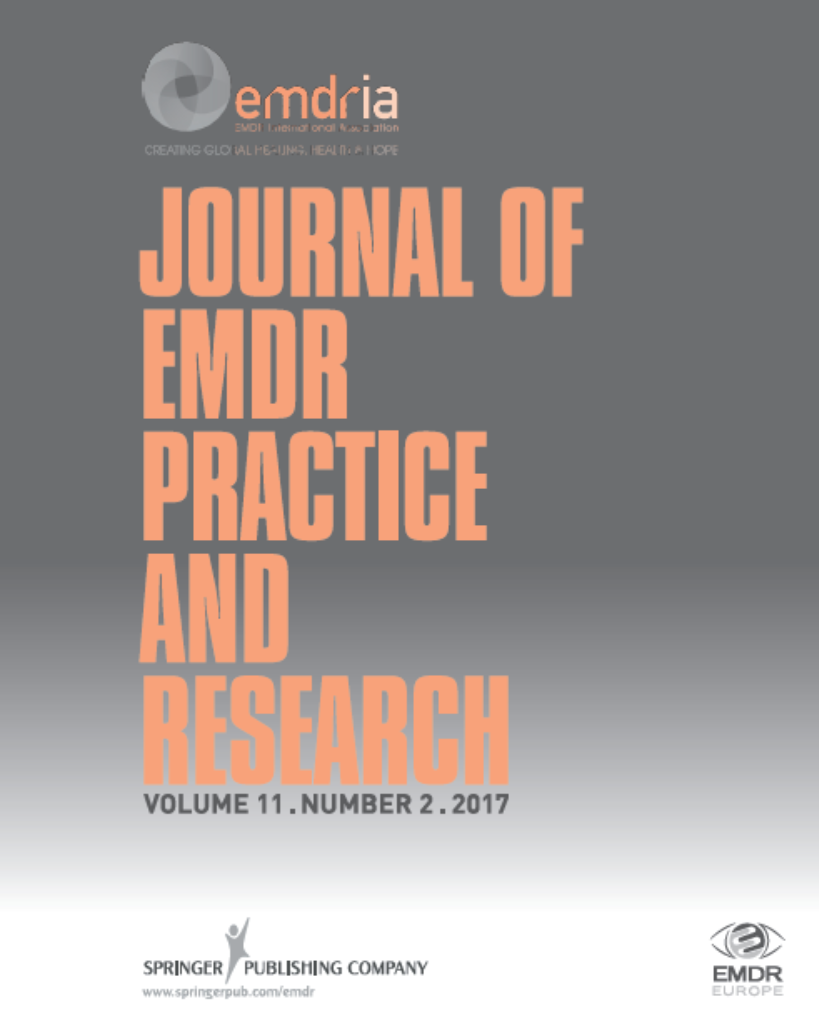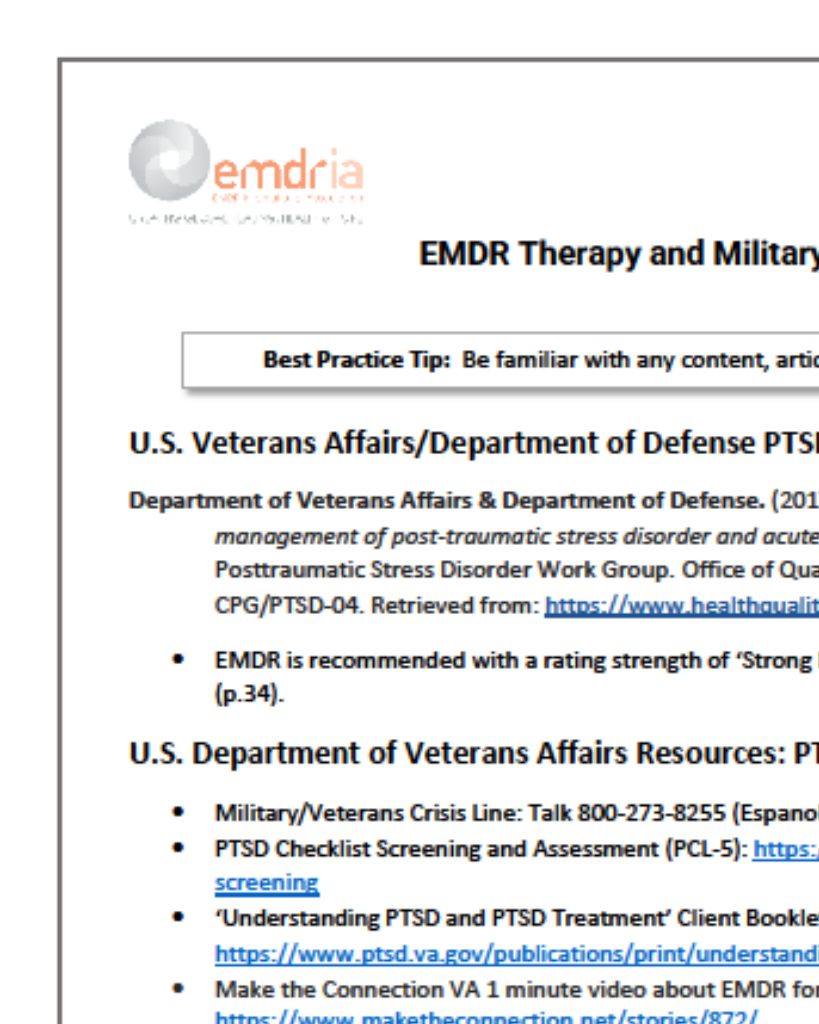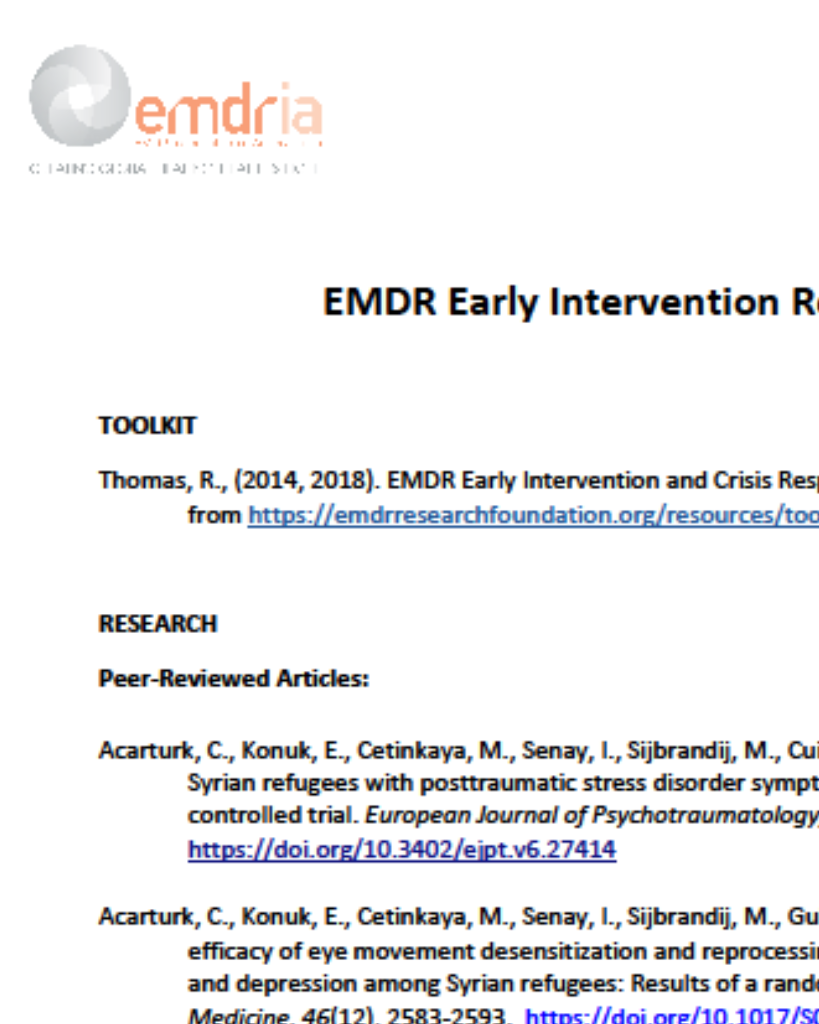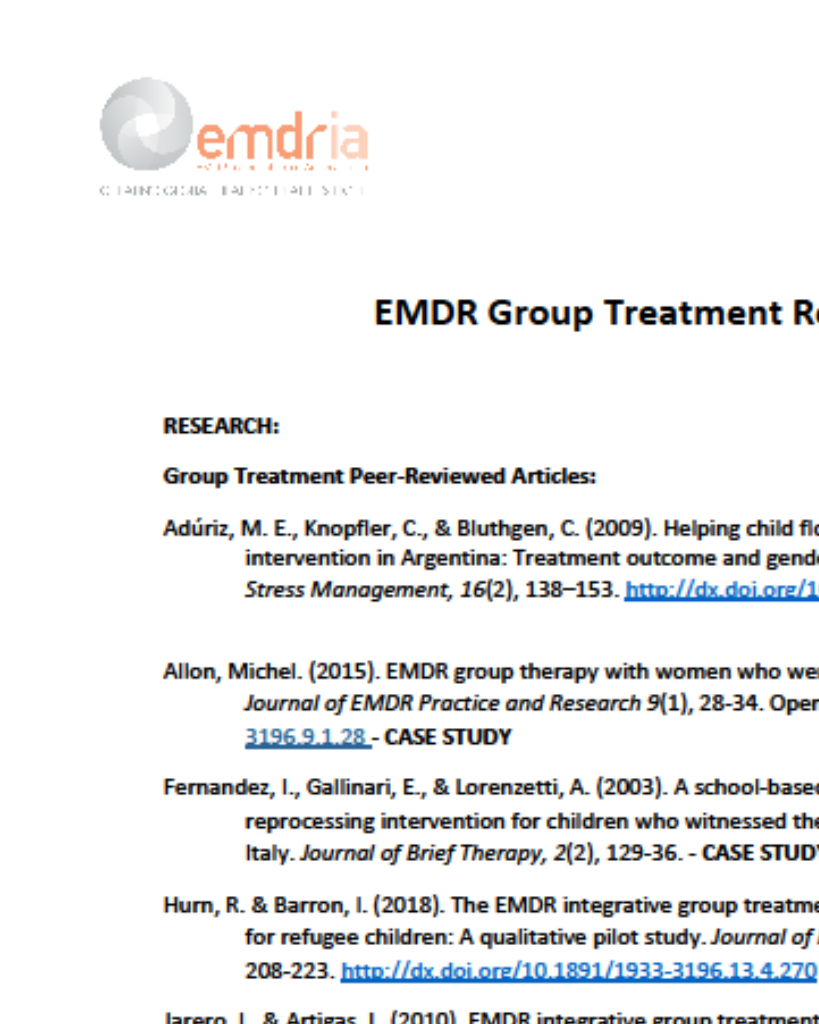EMDR in Older Adults With Posttraumatic Stress Disorder
Recognition of posttraumatic stress disorder (PTSD) in older adults is often difficult due to its complicated presentation.
Article Abstract
“Recognition of posttraumatic stress disorder (PTSD) in older adults is often difficult due to its complicated presentation. Once recognized, trauma symptoms can, in accordance with (inter)national guidelines, be successfully treated with eye movement desensitization and reprocessing (EMDR) therapy. However, limited empirical research has been done on the expression and treatment of PTSD in older adults. This article explains trauma and age in the context of psychotherapy. It discusses the interaction between age and pathology and summarizes the cognitive issues related to age, PTSD, and anxiety. It provides practical suggestions for how these can be addressed in treatment. Age-related challenges related to motivation are identified with practical suggestions for addressing them. The case illustrates the necessary additions and subtractions for older adults, with clear explanations and instructions. This article points the way for future research.”
—Description from publisher
Article Access
Open Access
Gielkens, E., Vink, M., Sobczak, S., Rosowsky, E., & Van Alphen, B. (2018). EMDR in Older Adults With Posttraumatic Stress Disorder. Journal of EMDR Practice and Research, 12(3), 132–141. https://doi.org/10.1891/1933-3196.12.3.132
About the Journal
The Journal of EMDR Practice and Research is a peer-reviewed publication devoted to integrative, state-of-the-art papers about Eye Movement Desensitization and Reprocessing. It is a broadly conceived interdisciplinary journal that stimulates and communicates research and theory about EMDR, and their application to clinical practice. The Journal of EMDR Practice and Research is the Official Publication of the EMDR International Association.
Date
September 1, 2018
Creator(s)
Ellen Gielkens, Marja Vink, Sjacko Sobczak
Contributor(s)
Erlene Rosowsky, Bas Van Alphen
Topics
PTSD
Client Population
Older Adults
Extent
10 pages
Publisher
Springer Publishing Company
Rights
Copyright © 2018 EMDR International Association
APA Citation
Gielkens, E., Vink, M., Sobczak, S., Rosowsky, E., & Van Alphen, B. (2018). EMDR in Older Adults With Posttraumatic Stress Disorder. Journal of EMDR Practice and Research, 12(3), 132–141. https://doi.org/10.1891/1933-3196.12.3.132
Series
12
Installment
3
Audience
EMDR Therapists
Language
English
Content Type
Peer-Reviewed
Original Source
Journal of EMDR Practice and Research
Access Type
Open Access





